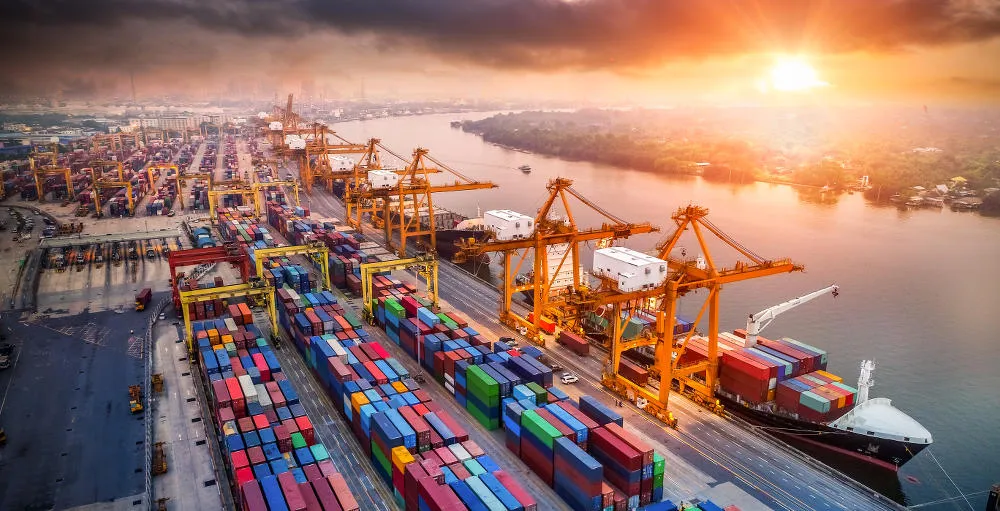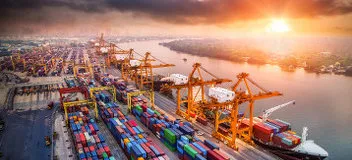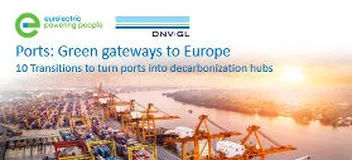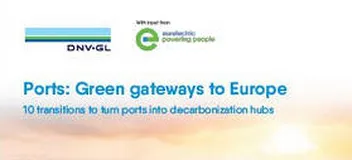10 green transitions in and around ports are key to decarbonize ports and cut pollution
ARNHEM, The Netherlands & BRUSSELS, Belgium, 2 July 2020 – Ports can play a pivotal role in the world’s decarbonization challenge and provide a blueprint for industries and governments to cut pollution and transition to a cleaner energy future. By 2050, the total electricity generating capacity for industrial* ports could increase more than tenfold. Renewable energy could account for at least 70% of the total electricity generation, compared to just 5% today.
This is one of the findings of DNV GL’s new study Ports: Green gateways to Europe - 10 Transitions to turn ports into decarbonization hubs. The study reveals that the expected deployment of offshore wind and the required grid enforcements to realize their connection will lead to an advantageous position for large industrial ports as a hub for renewable energy generation.
The report, made with input from Eurelectric, the sector association for the European electricity industry, also reveals that despite industrial production increasing almost 60% and cargo throughput growing 30% by 2050, energy efficiency measures and electrification could more than compensate for the growth in port activities, both in energy use and CO2-emissions. Additionally, the carbon intensity for port side energy use will almost halve.
However, for this to be realized, 10 Green Transitions will need to be made in and around ports. These transitions are:
- Electrification of port related activities
- Fuel switch for maritime transport
- Electrification of industry
- Integration of offshore wind
- Energy system integration
- Hydrogen as a feedstock and energy vector
- Phase-out of fossil fueled power plants
- Carbon capture and storage
- New regulations
- A circular and bio-based economy
The report also analysed smaller Transport Ports*. The findings show that without the Green Transitions, the ports energy use and CO2-emission will increase significantly, but that efficiency measures and electrification could more than halve the total energy consumption. Electricity use will increase almost fivefold and in absolute terms, electricity will be almost on par with fuel oil consumption.
Regardless of size or function, the importance of ports in the wider decarbonization agenda cannot be underestimated. Today transport accounts for one-third of the overall EU CO2 emissions, with water transport making up 14%. It is estimated that due to CO2 targets imposed on vehicles, the relative contribution of water transport will increase significantly if emissions from water navigation are not tackled in time.
Ensuring that ports become the driver of the energy transition and not a bigger contributor to global emission levels, will secure their position as linchpins in the economy and major employers in the markets they serve. According to the European commission, 1.5 million workers are employed in European ports, with the same amount again employed indirectly across the 22 EU maritime Member States.
Kristian Ruby, Secretary General of Eurelectric said: “The energy transition holds a huge potential for European ports. Offshore renewable energy will be a major driver of business and employment. And by electrifying operations, ports can drastically reduce both air pollution and carbon emissions.”
Ditlev Engel, CEO of DNV GL – Energy added: “The global challenges of climate change, environmental degradation and pollution requires decarbonization of all industry sectors. At the intersection of land and sea where many industry sectors are coming together, ports can play a pivotal role and be a blueprint for the rest of society. Governments need to incentivize port authorities and energy players to facilitate the development of energy infrastructure across multiple energy carriers in ports. First movers and those who manage to cooperate should be rewarded by relevant government policies. Fast action is needed to secure a more sustainable future.”
The report is available to download for free.
*Based on DNV GL’s model for a large European Industrial Port - this port is based on the average size of the 20 largest ports in Europe. It is mainly focused on bulk goods and containers. It has a large crude-oil and chemical industry cluster, co-location of power plants and a large potential for connecting offshore wind. We also modelled a smaller, mainly transport focussed port. The assessment of this port can be found in the report.
*Based on DNV GL’s model for a large European Transport Port - This port is one tenth of the size of the large or average industrial port and represents the average size of a seaport in Europe. It has a limited industrial cluster, mixed container and passenger transport and no offshore wind connection potential
About DNV GL
DNV GL is the independent expert in risk management and quality assurance, operating in more than 100 countries. Through its broad experience and deep expertise DNV GL advances safety and sustainable performance, sets industry benchmarks, and inspires and invents solutions. Whether assessing a new ship design, optimizing the performance of a wind farm, analyzing sensor data from a gas pipeline or certifying a food company’s supply chain, DNV GL enables its customers and their stakeholders to make critical decisions with confidence. Driven by its purpose, to safeguard life, property, and the environment, DNV GL helps tackle the challenges and global transformations facing its customers and the world today and is a trusted voice for many of the world’s most successful and forward-thinking companies.
In the power and renewables industry
DNV GL delivers advisory, certification and testing services to stakeholders in the energy value chain. Our expertise spans energy markets and regulations, onshore and offshore wind and solar power generation, power transmission and distribution grids, energy storage and sustainable energy use. Our experts support customers around the globe in delivering a safe, reliable, efficient, and sustainable energy supply.
Learn more at www.dnvgl.com/power-renewables
About Eurelectric
Eurelectric is the federation for the European electricity industry. We represent the power sector in over 32 European countries, speaking for more than 3,500 companies in power generation, distribution and supply. We contribute to the competitiveness of our industry, provide effective representation in public affairs and promote the role electricity in addressing the challenges of sustainable development. We draw on more than 1000 industry experts to ensure that our policy positions and opinions reflect the most recent developments in the sector. This structure of expertise ensures that Eurelectric’s publications are based on high-quality input with up-to-date information.



